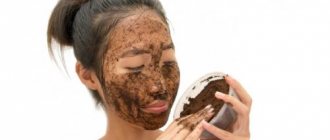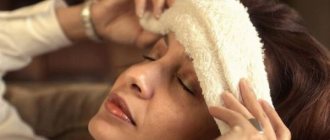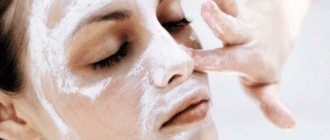What is a chemical peel and how does it work?
Peeling (from English “to peel” - exfoliate, cleanse) - removal of dead skin cells to improve the quality and appearance.
Chemical peeling is a method of controlled dissolution of the superficial, middle or deep layers of the epidermis and dermis, which takes into account the objectives for the purpose of physiological renewal using special diluted compounds - organic acids or alkaline components. Chemical agents in different concentrations activate fibroblasts to form new collagen and elastic fibers and increase the reparative intercellular capacity.
The procedure renews metabolic, antioxidant and protective processes, corrects age-related changes and normalizes the acid-base and biochemical balances of the skin. After the sessions, regeneration and remodeling of the skin are stimulated and cell activity is restored.
Story
Chemical peeling is one of the oldest cosmetic procedures with successive stages of practical development and deepening of knowledge in different historical periods. The technique has made a transition to the use of effective, safe, less traumatic and “year-round” drugs.
There is a certain sequence in the study of peelings.
- Ancient Egypt - the use of milk and fractional mineral, fruit, sand fragments in special compositions.
- Middle Ages - the use of substances from grapes and citrus fruits for rejuvenation and whitening of the entire body.
- 1883 - German physician Paul Gerzon Unna discovered the effectiveness of TCA, salicylic acid, resorcinol and phenol in the treatment of age spots and post-acne manifestations.
- 1974 - Eugene Scott unveiled the use of alpha hydroxy acids, Professor Albert Kligman discovered the healing properties of vitamin A for the skin.
- The end of the 90s marked the beginning of widespread chemical peeling in Russia.
Indications
- Biological aging - expression lines and deep age wrinkles, dull complexion, thinning, peeling and decreased elasticity of the skin.
- Photoaging is a disorder of the relief of the skin with hyperpigmentation, folds and vascular manifestations.
- Prevention of premature aging.
- Oily, seborrheic skin, acne, post-acne, congestive spots, enlarged pores.
- Dry skin, facial ptosis and signs of sagging.
- Pigment spots - freckles, chloasma, melasma, lentigo, post-inflammatory formations.
- Stretch marks, scars on the body - décolleté, abdomen, thighs.
- Keratomas, papillomas, molluscum contagiosum as part of combination therapy.
- Hyperkeratosis is a thickening of the top layer of skin.
- Preparation for invasive methods of exposure - injection procedures, resurfacing and plastic surgery.
- General disorders of skin quality and appearance in the facial area - periorbital area, cheeks, zygomatic area, forehead and body, neck, décolleté, arms and hands, shoulders, legs, back, abdomen, buttocks.
Consultation with a cosmetologist - general stage of preparation
The first stage of pre-peeling skin preparation, regardless of what exfoliation will be performed in the future, is a consultation with a professional cosmetologist. This step is especially important if you are a beginner and using peeling for the first time.
At the introductory consultation, the doctor will assess the condition of the skin, determine its type, sensitivity and indications for peeling. Then the cosmetologist will find out whether the patient has prohibitions for performing exfoliation, which include chronic and dermatological diseases, oncology, pregnancy, lactation period, open wounds on the skin and exacerbation of the herpes virus. Do not forget to warn your specialist about systemic use of hormonal drugs, antibiotics and other medications. This will also influence the choice of peeling and whether it can be performed.
After the cosmetologist collects medical history data and laboratory test results (if they were necessary), the patient is selected for the type of peeling that is suitable in depth and type. The doctor will tell you how to prepare the skin for exfoliation, how the session will take place, what consequences to expect immediately after the procedure, and what the effect will be after rehabilitation. At the same time, the specialist will decide on the need for topical anesthesia.
For superficial types of acid and physical peels, as well as enzyme exfoliation, special preparation is not necessary. Medium and deep procedures are performed only after two weeks of preparatory measures.
Contraindications for chemical peels
- Pregnancy, lactation.
- Increased body temperature.
- Malignant and multiple benign neoplasms.
- Violations of the integrity of the skin - wounds, cuts, burns.
- Dermatoses in the acute stage - psoriasis, eczema, allergic dermatitis.
- Herpetic infection.
- Viral, fungal and inflammatory processes - pustular lesions.
- Taking isotretionine, photosensitizing drugs.
- Pronounced rosacea.
- Tendency to keloid scars.
- Fresh tan and very dark skin.
- Autoimmune processes - scleroderma, systemic lupus erythematosus.
- Epilepsy.
- Decompensated diabetes mellitus
- Serious disturbances in the functioning of the cardiovascular system, gastrointestinal tract, kidneys.
- Carrying out traumatic procedures - deep grinding, cleaning, injection techniques less than 1.5-2 months before the start of the peeling course.
- Individual intolerance.
Technique for home chemical peeling, expected results
The algorithm by which chemical facial peeling is carried out at home is the same for all procedures and differs only in certain nuances that can increase the effectiveness of the intervention. When purchasing a ready-made composition, you must carefully read the instructions and follow the cleaning steps. If you prepared the mixture yourself, you need to carry out the following manipulations:
- Preliminary cleaning of the epidermis is carried out using cosmetic milk or gel. Even the mildest scrub can damage the integrity of the skin, and soap will dry out the skin even before the procedure.
- After the surface of the face is cleansed, the epidermis should be treated with a degreasing composition, which will increase the degree of tissue permeability.
- The skin is blotted with a towel and dried. The selected peeling composition is applied to the working surface. There are two options for applying the mixture. Soft – using a cosmetic brush, the mass is applied with light movements and distributed evenly. Aggressive - the product is applied with a cotton or gauze pad, with good pressure.
- Chemical facial peels at home are rarely left on for longer than 5-10 minutes. The indicator depends on the type of epidermis, the concentration of acids and the desired result. At the time of manipulation, a slight burning sensation should appear, indicating the influence of chemical components on the cells.
- Before doing chemical peeling, you need to prepare a soda solution (a teaspoon of baking soda per glass of boiled water), unless a special neutralizer is provided. When choosing formulations, it is recommended to pay attention to the presence of such a drug. If it is missing, you should not count on the high efficiency of the complex. After neutralization, which may be accompanied by a quiet hissing, the face should be washed with plenty of warm water and blotted with a towel.
- At the final stage of the event, you must use a moisturizer.
If all recommendations have been followed and the peeling composition has been selected in accordance with the indications and type of epidermis, you can count on the following results:
- the skin becomes clean, healthy, radiant and elastic. Systematic cleansing with a similar technique and action will speed up the removal of dead cells, improve tissue respiration, improve metabolic processes, and launch collagen synthesis.
- spots from acne and comedones will disappear or become less noticeable. The tone of the face will be evened out, pigmented areas will become lighter.
- as a result of restoration of biological processes, the surface of the face is leveled, rejuvenated, and gets rid of a network of fine wrinkles.
- mild chemical peeling of the face at home will clear the pores of sebaceous plugs, reduce the frequency of inflammatory processes, and neutralize red spots.
- Home chemical peels are an excellent way to maintain results after more serious salon procedures.
Differences in chemical peels by depth of penetration
- Super-superficial (affect only the stratum corneum of the skin) is a comfortable method for improving the quality of all types of skin. For example, 10% TCA-trichloroacetic acid, salicylic acid, alpha (30% glycolic acid) and beta hydroxy acid (5% salicylic acid), 5-10% retinol, enzymes of plant and animal origin (papain, trypsin).
- Superficial (act on the upper layers of the epidermis without disturbing the basal layer) - safe, painless, quickly renew, moisturize the skin without injury and enhance the formation of collagen and elastin with the help of weak acids. For example, 15-20% TCA, 30-50% glycolic and 20% salicylic, fruit acids (lactic, tartaric, mandelic), resorcinol.
- Median (penetrate the entire thickness of the epidermis and dermis to the papillary layer within living structures). They have a moderate painful, pronounced rejuvenating effect, improve the structure of the skin, activate the synthesis of new cells, and provide long-lasting results due to high concentrations of active components. For example, 25-30% TCA, 70% glycolic acid, 30-40% salicylic acid, Jessner's solution, 50% fruit acids.
- Deep (captures the epidermis and the entire thickness of the dermis, leaving small “islands” of tissue for regeneration). Correct significant defects and restore cellular resources. They are rarely performed in a hospital setting using anesthesia due to severe pain and possible complications. For example, phenol preparations.
Characteristics of active ingredients
Active components exist in several formulations.
Superficial peels
Retinol (yellow peeling) - reduces hyperkeratosis, tightens pores, activates the formation of new collagen fibers.
Alpha hydroxy acids (fruit, AHA) - water-soluble preparations for renewing and moisturizing the skin:
- Pyruvic acid - normalizes the condition of sensitive skin and increases its density.
- Lemon - brightens the skin.
- Milk - regulates water balance, softens the skin and exhibits anti-aging, anti-inflammatory effects. For example, Eye&Lip Contour Peeling, Algomask, 28.5% containing lactic, glycolic acids and argireline for the correction of hyperkeratosis, including around the eyes and lips.
- Almond - has an antibacterial effect, increases muscle tone and exfoliates dead cells. All-season.
- Glycolic - isolated from sugar cane, penetrates into the deep layers of the skin due to its small molecular weight and restores the texture of the epidermis, corrects age-related and inflammatory phenomena, reduces age spots. Used in higher concentrations for medium peels. For example, Anti Age Peel, Algomask, 50%.
Beta-hydroxy acids are fat-soluble substances that act in the deeper layers of the epidermis:
- Salicylic - the variability of intensity allows it to be used in different types of peelings. Reduces the appearance of acne and signs of photoaging, normalizes lipid balance. For example, Basik Peeling, Algomask, 18.5% containing 13.5% lactic acid and 5% salicylic acid.
Medium peels
- Trichloroacetic acid (TCA) - regulates metabolic processes and restores vascular mechanisms. For example, Anti Acne Peeling, Algomask, 19.5% containing 5% TCA, 5% salicylic, citric and lactic acids.
- Jessner's solution is a combination of acids and resorcinol, which evens out the complexion and stimulates regeneration. The variability of concentration allows for a surface effect.
- PRX-T33 - contains 33% TCA, 3% hydrogen peroxide and 5% kojic acid. Brightens and stimulates the skin, performed at any time of the year.
Deep peelings
- Phenol is a water-soluble element with an alkaline reaction. It has a pronounced rejuvenating effect, has toxic properties and obvious discomfort when applied, which is why it is practically not used in modern cosmetology.
Pre-peeling preparation
Before performing a mid-peel, specialized care is required 1-2 months before the procedure.
- Creams with fruit acids are applied at night 14 days before peeling and sunscreen.
- A treatment containing 5-12% glycolic and kojic acids is used in an amount of 3-4 procedures with an interval of 10-14 days to exfoliate and smooth the stratum corneum.
- Drugs are used to reduce the risk of age spots (vitamin C, topical retinoids, azelaic acid).
- Conditions for limiting exposure to the sun and solarium are observed.
- A course of antiviral therapy is prescribed if there is a tendency to herpetic infection.
- Vessels are prepared by taking antioxidant and angioprotective components after 55 years (for example, Troxevasin, Troxerutin).
No specific preparation is required before performing surface peeling. Sometimes serums and creams with a low acid content (6-12%) and high pH-3-4 are prescribed for 7-10 days.
Preparing for acid exfoliation
Preparation for chemical peels depends on the depth of penetration of the peeling agent into the skin. The more serious and deeper the exfoliation, the longer and more carefully it is necessary to prepare the epidermis for contact with acidic solutions. Superficial chemical peels based on AHA acids, as well as cleansing with enzymes, do not require a preparatory period, other than an initial consultation with a cosmetologist.
Medium and deep chemical peels should be preceded by the following preparatory measures:
- 2 weeks before acid exfoliation, stop using scrubs, gommages and cosmetic compositions based on low-concentrated acids, such as salicylic or fruit. Refusal of additional chemical treatments will relieve the skin of unnecessary stress during the procedure;
- 2 weeks before chemical peeling, refrain from ultrasonic facial cleansing, 3 months - from microcrystalline dermabrasion. Also, 14 days before acid exfoliation, it is not recommended to resort to beauty injections: Botox, mesotherapy and biorevitalization;
- 2-3 weeks before dry cleaning, avoid visiting the solarium, and also limit your time in direct sunlight. This will help avoid such side effects as the appearance of unwanted pigmentation;
- 10 days before the planned procedure, before each time you go outside, apply sunscreens and lotions with a protection factor of at least SPF 35 to your face, neck and décolleté;
- a week before acid peeling, treat your skin as gently as possible, avoid injury and irritation. Refrain from waxing, photo- and electro-epilation, depilation with chemical compounds, perm, dyeing and keratin hair straightening;
- 2 weeks before exfoliation, limit visits to the pool, steam rooms, baths and saunas;
- If your skin is prone to herpetic rashes, especially in the lip area, start taking antiviral medications 2-3 days before chemical peeling. For example, based on Acyclovir. Taking antiviral drugs, at the discretion of the doctor, can continue after peeling for another 2 weeks;
- two weeks before chemical exfoliation, cosmetologists recommend daily treating the facial skin with special products, for example, creams or lotions based on glycolic or retinoic acid in a concentration of 8 to 25%. Glycolates help soften the dense stratum corneum of the epidermis, smooth the skin and ensure uniform distribution and effect of the peeling composition. Retinoids promote rapid skin regeneration after peeling, accelerate epithelial exfoliation and normalize the functioning of the sebaceous glands. Retinoids also help deep penetration of the peeling composition, but you need to stop taking them 7 days before exfoliation;
- Before a chemical peel, a cosmetologist may recommend the use of whitening products based on retinol, hydroquinone, ascorbic or kojic acid. Hydroquinone is usually prescribed to dark-skinned women, while other products are suitable for all skin types. Using lightening creams and lotions the day before an acid cleanse will help prevent hyperpigmentation from appearing after the procedure. A week before exfoliation, the use of bleaching compounds should be stopped;
- on the recommendation of a cosmetologist, you may need to take antibiotics a day before peeling. These drugs will block the development of skin infection and prevent pimples after exfoliation;
- a week before chemical peeling, some doctors recommend stopping taking hormonal medications, antidepressants and tranquilizers;
- On the eve of the procedure using acidic solutions, you will need to undergo an allergy test to ensure that there is no allergic reaction to the active components of the product. To do this, a drop of the composition is applied to the wrist, behind the ear or the inner bend of the elbow. If after 15 minutes the skin in this area does not turn red or start to itch, peeling is suitable;
- Before a chemical peel, especially if it is a phenol or retinoic exfoliation, arrange for friends or family to drive you home. After peeling with retinoids, the yellow film from the face is washed off only the next day after the session, and before deep peeling with phenol, light sedation is required, which will make it difficult to drive independently.
Dope-peeling procedures before chemical exfoliation are divided into 4 categories: adaptation of the skin to acidic solutions, softening of the horny epidermis, slowing down the synthesis of melanocytes, and conducting an allergy test to identify intolerance to the components of peeling compositions.
Unpleasant consequences after peeling in the form of inflammation, allergies and pigmentation can be minimized if you follow all the recommendations of the pre-peeling preparation that suits you. What these procedures will be can only be decided by a cosmetologist after the meeting.
Tactics of procedures
The protocol for the sessions depends on the type of substance, indication and initial condition of the skin. There is a sequence of peelings
- Preparatory stage (pre-peeling care, examination of the affected area, taking an anamnesis to identify possible contraindications and complications).
- Gentle cleansing and degreasing of the skin, protecting eyes and lips with a nourishing cream.
- Selection and application of 1-2 ml of the composition in the form of a gel, mask or solution, depending on the form of release and the effect on the desired areas (for example, a mask-tablet for serums). Brushes, cotton pads or swabs are used for processing.
- Consistent and uniform distribution of peeling in the form of 1-3 layers across zones: forehead, nose, temporal region, bony edge of the orbit, cheeks, chin, neck, central and fixed facial parts.
- Using a fan or fan for cooling when pain and discomfort occurs.
- Time delay - depends on the depth of peeling and the area of the treated area (up to 2 minutes in the eye area, from 15 minutes to 2 hours in the face and body area).
- Controlling the reactive state of the skin (redness, swelling, burning, soreness).
- Neutralization with a special solution containing alkali for 1-3 minutes to moisturize and tone the skin (for example, neutralizer lotion).
- Removing peeling. For superficial peeling, the solution is washed off immediately after the skin reaction appears or after a few hours (for example, yellow peeling).
- Prescription of post-peel care for protection, nutrition and hydration (for example, sunscreen and age spots 45).
Before peeling
Step one
Before carrying out the procedure, you must consult a cosmetologist. The specialist will determine the condition and type of skin, the degree of its photosensitivity (skin reaction to solar radiation). The cosmetologist will tell you how the procedure will be performed, how many exfoliation sessions you will need to undergo, how to care for your skin after peeling, and what symptoms should not be ignored.
A temporary contraindication for peeling may be the use of certain skin medications or medications that cause increased skin sensitivity. If you are predisposed to allergies, it is a good idea to find out whether an allergic reaction occurs to the peeling drug.
Step two
The preparation period for peeling can last for two weeks. At this time, experts do not recommend visiting the pool, sauna, solarium, and advise avoiding exposure of the skin to direct solar radiation. If there is inflammation on the face, exacerbation or relapse of acne, you should undergo anti-inflammatory therapy.
As Olga Petrashevich noted, preparation for chemical peels depends on the depth of penetration of the chemical into the skin . The more serious and deeper the exfoliation, the longer and more carefully the epidermis should be prepared for interaction with acid solutions. Superficial peels, which are carried out on the basis of AHA acids and enzymes, do not require a preparatory stage, in addition to consultation with a specialist. But medium peels must be preceded by mandatory preparation.
Before chemical peeling, when going outside, do not forget about sunscreen (protection factor of at least 30). The fact is that reducing melanin synthesis helps prevent the formation of age spots on the skin.
Before peeling, you should not get carried away with scrubs or other exfoliating procedures. A week before a chemical peel, laser or wax hair removal should also not be performed.
Proper pre-peeling preparation helps to significantly improve the results of exfoliation: the skin texture is better evened out, it heals faster after exposure.
Expected effects
Depending on the type, quantity, and depth of peelings, certain mechanisms occur.
- Exfoliation, cleansing and whitening of the skin (removal of dead cells, age spots).
- Activation of biological functions and cellular resources (antioxidant effect).
- Moisturizing (synthesis of hyaluronic acid).
- Normalization of the sebaceous glands and narrowing of pores.
- General skin rejuvenation (increasing elasticity, smoothing the relief, reducing wrinkles, smoothing out creases).
- Renewal of cellular structures (correction of scars and stretch marks).
- Increases blood circulation and strengthens blood vessels.
- Restoration of skin immunity and barrier functions.
- Achieving skin tightening (lifting effect).
- Normalization of the density and elasticity of the epidermis.
- Formation of new contours and improvement of the structure of the face and body.
Features of chemical peels
- With superficial peeling, a slight and quickly passing burning and tingling sensation occurs, the effect is cumulative and short-lived. With medium peeling, the pain is pronounced, but the effect is long-lasting.
- The depth of penetration depends on the acid-base balance (the lower the pH, the greater the activity of the drugs), concentration (the higher, the deeper the peeling effect) and consistency (the thicker the composition, the softer the peeling).
- With medium and deep exposures, a frost effect is observed (a whitened area of the skin to control the action of acids), which lasts from 15 minutes to 3 hours after the procedure.
Before peeling: how to prepare for the procedure
Preparation for peeling is the most important stage that determines how effective and safe the procedure will be. Regardless of where it is carried out - at home or in a salon, the steps will be approximately the same.
General stage: consultation with a specialist
The first and general stage that must be performed before any peeling is a consultation with a specialist (dermatologist or cosmetologist). This step is especially important when performing exfoliation on your own: a specialist will recommend suitable options for means, tell you in detail about the procedure itself, and warn against possible mistakes.
A consultation with a cosmetologist can be divided into several substages:
- Initial consultation, medical history examination. The specialist identifies possible contraindications to the procedure: herpes, taking hormonal medications, the presence of cardiovascular diseases, exacerbation of acne, etc.
- Carrying out diagnostics (if necessary).
- Selection of the appropriate type of peeling based on the type of exfoliation and depth of impact on the layers of the skin, consultation on the rules of its use.
Preliminary preparation
Preliminary preparation for peeling at home is mandatory, regardless of how it will be carried out - independently or by a specialist. In the second case, the cosmetologist must consult you in advance, indicate the exact duration of such procedures, a list of products, etc.
Before physical peeling
Physical peeling, that is, exfoliation with products containing exfoliating particles, requires special preparation:
- 7–8 days before the procedure, avoid visiting the bathhouse, sauna, public swimming pools, solarium, or prolonged sunbathing.
- Replace your usual face cream with one containing a high SPF factor (at least 35).
- Before peeling, dry the acne and inflammatory elements on your face, get rid of herpes with antiviral drugs.
- A week before the procedure, avoid scrubbing the skin, using gommages and rolling masks.
- If you want to enhance the effect of physical peeling in the fight against age spots, start using whitening care products a week and a half before the procedure.
Preparation before physical peeling is much simpler than before chemical peeling, and consists mainly of healing herpes and inflammatory elements on the face.
Before chemical peeling
Regardless of where and by whom it is performed, at home on your own or in a salon by a professional, chemical peeling is a serious procedure that requires a number of preliminary measures. And the deeper the effect of the agent of the product, the more intensively it is necessary to prepare the skin for the effects of acids on it. For example, before salicylic or almond peels, you just need to consult with a cosmetologist. To carry out medium and deep cleansing, it is necessary to follow a number of rules.
2 weeks before the procedure:
- Avoid visiting the solarium and sunbathing;
- avoid injuring the skin with scrubs, gommages and facial cleansing brushes;
- replace your usual skincare products with ones containing SPF;
- refuse Botox injections, biorevitalization, ultrasonic cleaning and other cosmetic procedures;
- exclude trips to the bathhouse, sauna, public swimming pools;
- According to the recommendations of a cosmetologist, start using skincare products that contain retinoic or glycolic acids. They help soften the upper layers of the epidermis and provide deep peeling effects during the procedure. The duration of use of such care products is usually 5–7 days. A week before the procedure, you should stop using them.
- replace your usual creams and lotions with whitening ones if you want to get rid of pigmentation and post-acne using peeling. Use them, like products with retinoic and glycolic acids, for no more than 7 days. A week before the procedure, stop using them.
One week before the procedure:
- carry out a test for intolerance to the components of the peeling composition. The cosmetologist should give a small sample of the solution;
- According to the recommendations of a specialist, start taking tranquilizers, hormonal drugs and antidepressants. This is an exclusively individual step, which is prescribed only by a dermatologist or cosmetologist;
- Avoid waxing and using depilatory creams.
2–3 days before the procedure:
- start taking antiviral medications if you have herpes on your face;
- take antibiotics prescribed by a cosmetologist to avoid negative consequences from chemical peeling.
All the steps listed above are just general recommendations and not a call to action. If you perform peeling in a salon, the cosmetologist should tell you in advance about all the stages of this procedure, including preparation for it. After passing the tests, it will become clear whether it is necessary to take antibiotics, hormonal medications, or whether you can limit yourself to just avoiding baths and saunas and using special skincare cosmetics.
Immediately before the procedure
Regardless of the type of peeling, skin type, or the cosmetologist’s signature techniques, the preparation immediately before the procedure is always approximately the same and consists of the following steps:
- Skin cleansing in several stages:
- removing makeup, sebum and dirt with cleanser and a soft sponge;
- use of tonic;
- degreasing the skin with an antiseptic.
- Steaming.
- Local anesthesia (for deep peeling).
After these simple procedures, you can begin to exfoliate the skin.
Cleansing the skin before the procedure should be performed in several stages: washing, toning and degreasing
Rehabilitation period
Skin restoration with superficial peeling takes up to 5 days, with medium peeling - up to 10 days, with deep peeling - up to 4-6 months. To prevent unwanted consequences after chemical peeling, it is important to follow the rules.
- Avoid the use of decorative cosmetics in the first 2-5 days after the procedure.
- Do not wash your face during the active post-procedure phase (24-72 hours).
- Use soft cleansers based on hydrophilic oils or plant extracts.
- Do not remove crusts or flakes of skin yourself, but lubricate them generously with cream.
- During the cycle of procedures, avoid traumatic agents and procedures (scrubs, grinding, plastic surgery).
- Limit excessive facial movements for 7 days.
- For 7-10 days, do not visit the bathhouse, swimming pool, sauna, or engage in heavy physical exercise.
- For 14 days, do not sunbathe, do not visit the solarium, but use sunscreen.
- Follow post-peeling care (moisturizers with hyaluronic acid, phospholipids and waxes to restore the epidermis, Panthenol for skin regeneration, vitamin C to strengthen the vascular wall).
- When deep peeling, use antibacterial and anti-inflammatory drugs to stimulate skin healing.
- During the course, maintain an optimal drinking regime and adhere to a balanced diet with limited spicy, fatty foods.
Procedures before physical peelings
Physical peelings include all types of mechanical and hardware effects on the facial skin. For example, ultrasonic cleaning and laser resurfacing, gas-liquid and carbon peeling, brossage, microcrystalline dermabrasion, cryotherapy, vacuum and coral cleaning. Many of the physical peels are considered gentle, superficial techniques that are suitable for all skin types. The only exceptions are laser peeling and microcrystalline dermabrasion.
Physical peels involve several general preparatory steps:
- a week before the date of the planned peeling, you need to stop visiting swimming pools, saunas, steam rooms, baths;
- 2 weeks before peeling, you must refrain from tanning in a solarium or in direct sunlight;
- Every day for a week before exfoliation, you need to apply sunscreen or lotion with a high degree of protection (at least 35) to your facial skin;
- if there are inflamed pimples on the skin, exacerbations of acne or acne, before peeling it is necessary to cure relapses with special anti-inflammatory therapy;
- if there are herpetic rashes on the skin, for example in the lip area, you need to start taking antiviral drugs before peeling;
- a week before peeling, it is prohibited to scrub your facial skin with home or professional products containing large abrasives, such as ground coffee beans, fruit seeds, cane sugar or sea salt. It is also not recommended to use gommages and other exfoliating cosmetics based on salicylic or fruit acids;
- if the purpose of physical peeling is to lighten age spots, then a week before exfoliation you need to start using bleaching drugs that slow down the formation of melanocytes. These can be lightening creams or lotions based on azelaic or kojic acids.
The pre-peel preparation steps for physical exfoliation are simpler than for acid peels. The main goal of preparatory measures in this case is to relieve inflammation, prevent ultraviolet pigmentation and skin injury from abrasives.
Side effects and complications
Predictable.
- Erythema is redness of the skin, which depends on the concentration of substances and lasts up to 2-3 hours with superficial peeling, up to 5 days with medium peeling, and up to 2 months with deep peeling.
- Exfoliation is the removal of a thin layer of dead cells. It can be small-plate for superficial peeling and large-plate for medium peeling. Duration varies from 3 to 7 days.
- Swelling after chemical peeling is a natural reaction to a violation of the integrity of the skin and an increase in capillary permeability during medium and deep peelings. Stores for 2 to 4 days.
- Changes in skin color (darkening) are response mechanisms due to peeling, which lasts up to 14 days.
- Sensitivity is a manifestation of skin reflexes to the penetration of products, which persists for 14 days.
Undesirable (as a result of improper post-procedure care, individual characteristics or after poor-quality implementation of the technique). They are divided into immediate (up to 2 weeks after the procedure) and delayed (from 3 to 10 weeks).
- Exacerbation of acne is an inflammatory reaction characteristic of oily skin. Antibiotics are prescribed to suppress the processes.
- Activation of herpetic infection - occurs in the absence of a preventive course before peelings. If a rash occurs, antiviral medications are recommended.
- The addition of a secondary infection is manifested by pustular rashes due to non-compliance with antiseptic rules and a proper recovery period. Local or systemic antibacterial agents are used.
- Allergic reaction - to prevent the appearance of rashes, a test test is first carried out on a limited area of the skin to identify possible manifestations. When they occur, antihistamines (for example, Erius) are used.
- Persistent redness of the skin - occurs when blood vessels are dilated after deep peeling. In this case, it is important to follow the necessary recommendations after the sessions.
- Hyperpigmentation is the activation of cells that produce pigment (melanin). In this case, pre-peel preparation and the use of retinoic and phenol peels are important, as well as mesotherapy to reduce age spots.
- The demarcation line is a clear boundary between the treated and undamaged areas of the skin. Leveled by Jessner peeling.
- Scars (hypertrophic, keloid) - appear with medium and deep chemical peels. Corrected by laser exposure, ozone therapy, electrophoresis with lidase.
Indications and contraindications
Pyruvic Peel Mediderma (Pyruvic Peel Mediderma) is one of the safest exfoliants. It is much safer than yellow retinoic or glycolic peels, but at the same time, it has an effect similar to that of the chemical TCA.
Indications for the use of pyruvic acid as a peel are quite extensive. The list includes both manifestations of aging and problem areas on the skin (pimples, rashes, acne).
When to use green peel:
- For hyperpigmentation not associated with hormonal imbalance. For example, this type of exfoliation helps with freckles or age-related failure of melanin production. But if it is used to get rid of the same problems during pregnancy, then it can only worsen the condition of the epidermis;
- The main indication for the procedure is seborrheic dermatitis, rosacea and other skin diseases arising from external pathogens (with the exception of fungal diseases);
- Problematic skin, pimples during puberty, and disruption of the sebaceous glands are also considered sufficient reasons for using this acid.
Facial peeling
But it is not always possible to do pyruvic cleansing peeling.
Contraindications:
- Pregnancy and lactation;
- Fungal skin diseases or cancer;
- Weakened immunity (colds, acute chronic illness, metabolic disorders);
- Any damage to the integrity of the skin (wounds, scratches, open pimples, ulcers);
- Tanning, hyperpigmentation associated with metabolism;
- Also, you should not do pyruvic cleansing in the spring or summer, as this can cause various complications, ranging from swelling to age spots.
Considering that pyruvic acid is a chemical peel, like milk or salicylic peel, then before visiting a beauty salon you need to carry out certain tests and consult a dermatologist. This will help minimize possible negative reactions of the body.
Photo - Before and after peeling
Peeling course
The number of procedures differs depending on the type of substance.
- Superficial peelings are carried out once every 7-14 days in the amount of 5-10 procedures. Maintenance sessions are carried out 1-2 times a year.
- Medium peelings are used once every 15-30 days in the amount of 1-5 procedures. Maintenance course - once every 3-5 years. The optimal period is from November to March to avoid negative solar effects.
- Deep peelings - exposure is carried out rarely, 1-2 times during life when clear indications are identified.
Combination with cosmetic procedures
Chemical peels are harmoniously integrated into various cosmetology techniques to enhance the effect.
- The introduction of botulinum toxin and fillers for additional correction of age-related changes occurs 2-3 weeks after superficial-medial peelings.
- Mesotherapy - the introduction of specialized cocktails into the middle layer of the skin to stimulate cellular processes of self-regulation and renewal is carried out before or after procedures in 3-10 days.
- Biorevitalization - the use of preparations containing hyaluronic acid to maintain the required level of hydration and increase regeneration is carried out 5-10 days after superficial and medium peels.
Using chemical peels at home
Medium and deep peels are not carried out independently due to the lack of an accurate calculation of the concentration, type of acids and the increased risk of complications.
For home use, superficial peels in low concentrations (1-10% glycolic, 2-4% salicylic, 0.5-4% lactic, azelaic acid, topical retinoids) are recommended, which normalize metabolic processes and renew the skin.
Determine the basic principles of using surface compounds at home.
- Preliminary selection of components, coordination of techniques and recommendations after consultation with a specialist in order to avoid undesirable consequences after the procedure.
- Skin cleansing.
- Consecutive single-layer application of the composition to dry skin using a brush, avoiding the area around the eyes.
- Removal of peeling after waiting time, assessing the condition of the skin and applying a neutralizer.
- Use of moisturizers and protective products after the session.
- The duration of the course is selected individually and is 5-10 procedures with an interval of 1 time every 7-10 days.
Basic rules for home chemical peeling
Improperly performed chemical peeling of the face at home, at best, will not give the desired result, at worst, it will cause aggravation of skin problems or serve as a catalyst for the development of complications. Home chemical peels most often mean activities aimed at superficial effects. Some medial cleanses can be done at home, but this is fraught with high risks and a low degree of effectiveness of the technology.
Rules for the procedure:
- Before cleaning, it is necessary to test the tolerance of the components. It is not recommended to use a diluted composition for this purpose. It is better to try the mixture that will be used or even break it down into its components and try everything separately.
- The vast majority of chemical peels are prohibited during the season with increased solar activity. Even enzyme mixtures most often contain fruit acids that increase their effectiveness. Thus, the optimal time for peeling is autumn and winter.
- Home chemical peels are applied in a very thin layer. Do not forget that these are chemical reagents that can cause burns.
- Acids do not penetrate well through the lipid layer on the surface of the epidermis, so before applying the main composition, the facial skin must be degreased with a special lotion.
- Applying medications to the area around the eyes is prohibited!
- The feeling of burning and tingling during manipulation indicates the work of the chemical components. These sensations should not be expressed. To alleviate the condition, you can use a hair dryer with cool air. If feelings become unbearable, the composition must be immediately neutralized with a special or soda composition. The acid is not washed off with water - the interaction of the components will cause a severe chemical burn!
- Chemical facial peeling at home is not recommended more than once every 10 days.
- If the epidermis is hypersensitive to chemical reagents and external factors, it is better to avoid the acid peeling procedure.
- For 24 hours after the session, it is forbidden to touch your face with your hands or use decorative cosmetics.
There are homemade express chemical peels that do not apply to some of the above conditions. These can be very soft rolls or gommages, in which a minimum amount of chemical components is used, and the main work falls on biologically active substances.
Contraindications to the use of home chemical peeling:
- Exacerbation of acne (this contraindication does not apply to salicylic cleansing).
- Individual intolerance to components.
- Acute period of herpetic infection.
- Damage to the integrity of the skin, the presence of inflammatory processes or neoplasms on it.
- Increased sensitivity of the epidermis, tendency to violent reactions to external stimuli.
- Cardiovascular diseases, mental disorders.
- Pregnancy and lactation period.
In addition to the mixture for peeling, you need to prepare a clean soft towel without large lint, cleansing milk, degreasing tonic, a special neutralizer or soda solution, and moisturizer.











